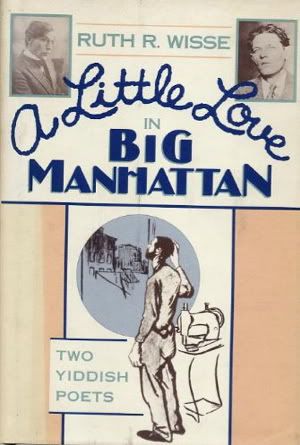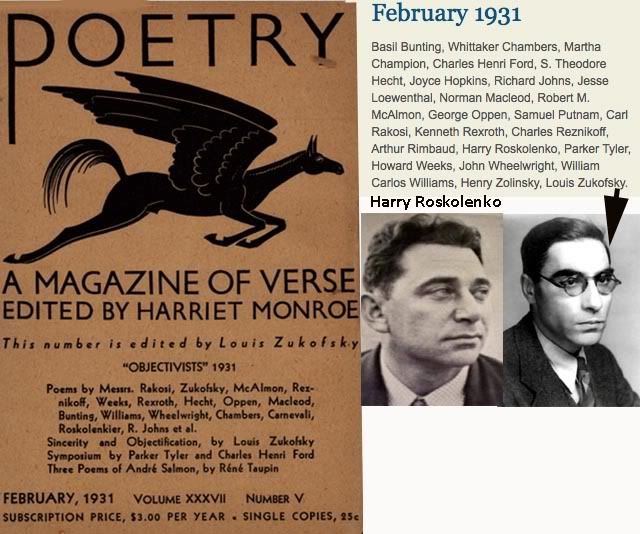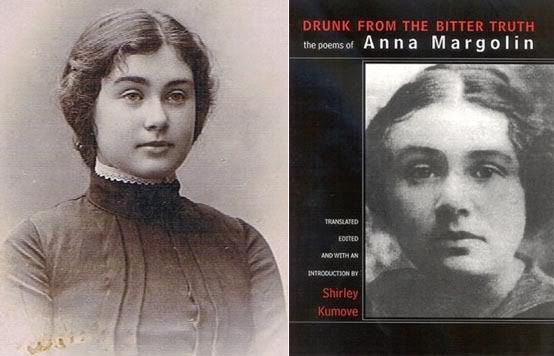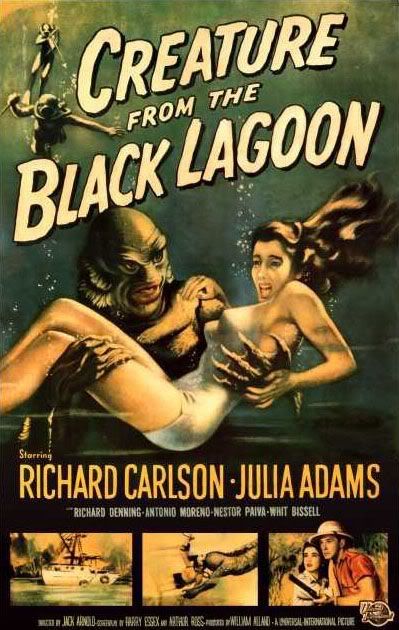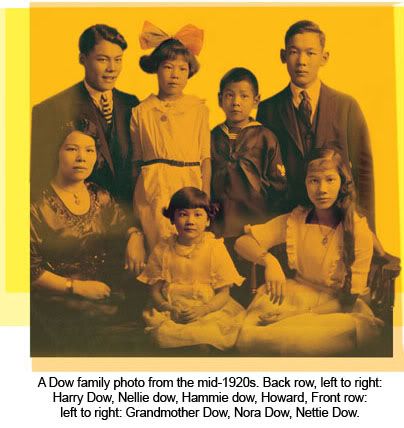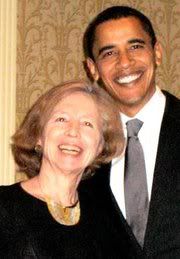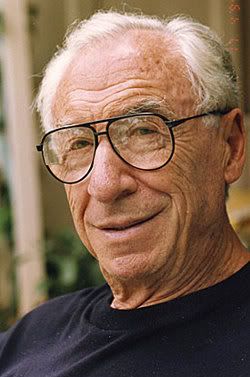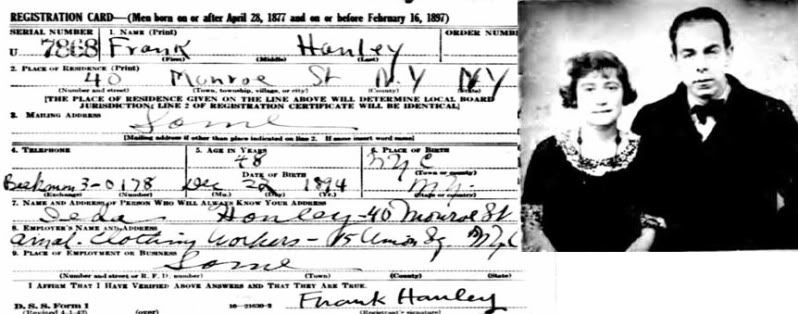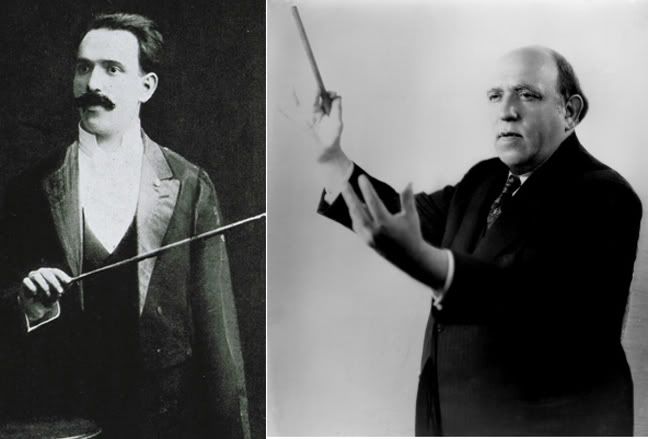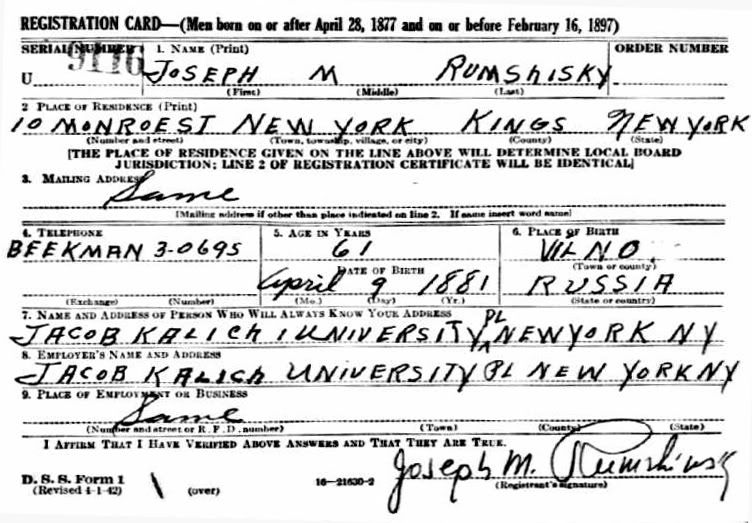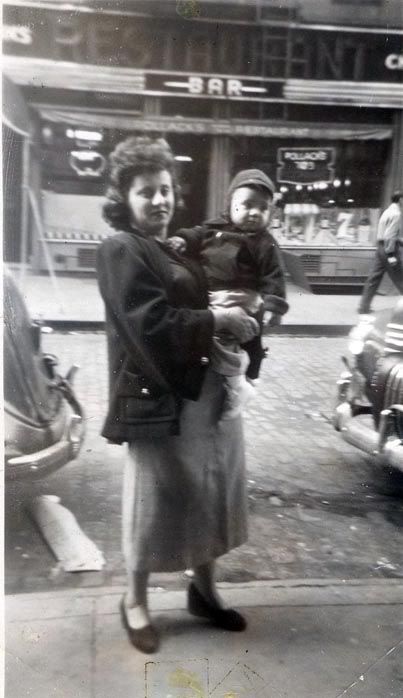Wednesday, May 30, 2012
The Baudelaires of East Broadway
Ruth Wisse will be at the Eldridge Street Synagogue on June 3 as part of a Yiddish Writers Tribute. Reuben Iceland and Anna Margolin, members of the Di Yunge, lived in Knickerbocker Village at 18 Monroe Street
excerpts from a Commentary Magazine review of "A Little Love in Big Mahattan: Two Yiddish Poets."
The story Ruth R. Wisse tells in her latest book is, like the poem from which she takes her title, ironic and bittersweet. It is the story of a group of young Yiddish-speaking immigrants in turn-of-the-century New York who lived for poetry. Their brief, doomed movement to fashion a purified Yiddish aesthetic, one which was committed not to any political or social ideal but to language itself, began in 1907 and was known as Di Yunge (“The Young”). In the two decades between the first major wave of Jewish immigration in the 1880′s and the years when these poets arrived, Yiddish culture in America had already undergone a number of changes. The first Yiddish literature, typified by the “sweatshop school” of poetry, was didactic and blunt; it addressed itself entirely to the requirements of the working-class population, depended on a close alliance with the Yiddish press, and was cut off from the folk traditions of the prose masters—Sholem Aleichem, Men-dele, Peretz—who were then writing their best works in Russia and Poland. The sweatshop poets, responding to a totally unfamiliar tenement and factory existence, engineered a kind of literary expression that suited the needs of their uprooted, bewildered audience. Their poetry was little more than a bald testimony to this community’s hard new life.......Perhaps the example of Yunge poetry which manages best to incorporate all these high-minded ideals is Mani Leib’s “Shtiller, shtiller” (“Hush, hush”), a poem about waiting for the messiah, which opens this way
Hush and hush—no sound be
heard.
Bow in grief but say no word.
Black as pain and white as death,
Hush and hush and hold your
breath.
One by one they declared their devotion to this pure, self-contained aesthetic: Mani Leib, Reuben Iceland, Zishe Landau, Moishe Leib Halpern. Barely twenty, fresh from various parts of the Jewish Pale, working endless hours in bootmaking factories or as window washers, they gathered at night in the cafes to discuss the French symbolists and Walt Whitman. They were lucky to steal a few moments alone in a crowded, noisy apartment, these Baudelaires of East Broadway, to write longingly of stillness, quiet, trees, snow. To their heated debates they brought the zeal of the formal religious practices they had all but abandoned. They called themselves “a new kind of minyan”; for them, poetry was like the promise of the Sabbath or of Mani Leib’s breathlessly awaited messiah—it brought the redemption of the world into closer view. They saw themselves as dandies, as aesthetes, with “their elegant canes, their long hair and their wide, sweeping hats,” but what one notices first about them is how close to the shtetl they still were, and how young, how full of books and spite and cheerfulness and strength.
Who's Who In Knickerbocker Village History: Sam Eppy
Samuel Eppy
Sam lived at 14 Monroe Street in 1940. He must have been doing well at that time as well because the family is listed in the census as having a live in maid! I recall a conversation with Marion Fox where she said she was friendly with Sam's daughter Judy.
Sam lived at 14 Monroe Street in 1940. He must have been doing well at that time as well because the family is listed in the census as having a live in maid! I recall a conversation with Marion Fox where she said she was friendly with Sam's daughter Judy.
Who's Who In Knickerbocker Village History: Moses Asch, part 2
An excerpt from a 1978 conversation with Moses Asch from Pete Seeger's site
"Conversation with Mr. Folkways: Moe Asch" by Jim Capaldi
Moe Asch has been recording folk music longer than most of us have been alive. From the 1930’s, a time of great social and political upheaval, to the present space age, he and his microphones have captured the music and sounds of the people of the world on Asch, Disc and Folkways Records. It was his genius that recognized the value of native American folk song, and the talent of people like Woody Guthrie, Leadbelly and Pete Seeger at a time when neither the music nor the musicians playing it were considered to be worthy of any serious attention. Moe Asch has been a key figure in the folk revival, having been associated with People’s Songs Bulletin, Sing Out! and Oak Publications. But it is chiefly through his role as founder of Folkways Records that we know of him today.
Now in his seventies, Moe Asch remains a vital force in American folk music. His record company still issues dozens of new releases every year and still maintains the policy of keeping all records in print at all times. Material on the more than 1,600 discs ranges from Appalachian mountain music to love songs of Lebanon to sounds of the human body. Looking back over the accomplishments of four decades, Moe Asch’s place as perhaps the foremost oral historian of this century is well established. The discussion that follows took place in May, 1977; it reveals something of Mr. Asch’s methods, philosophy and plans for the future.
Folkscene: Was your father Sholem Asch, a famous Yiddish writer (whose most well-known work was "The Nazarene’) , an influence in your decision to devote your life to documenting the folk music of your time?
Asch: No, except that he used to go on lecture tours throughout the United States in the 1920’s; wherever he went in the old days, in small towns, they had these sheets listing past events of the place, how they began and grew; always the heading had a folk song. So I knew there were folk songs about various areas in the United States that people had documented. My main influence was the John Lomax book which came out in 1913, Cowboy Ballads. That was the first book that documented American folk songs, and I picked that up in Paris.
I’m not interested in music per se, but the literature of it, the words. The music is mostly public domain. Usually somebody, a poet or someone else, wrote about a current event, some local happening. Like tabloids, they were local things that happened that were of interest, like murders. Local people set it down; someone musically inclined put it to music and sang it. My background is literary.
Folkscene: Then why did you go into the recording business, instead of publishing?
Asch: Because I happen to be an electronic engineer and I built equipment for radio stations. They needed recordings to use on the equipment and I got involved with folk music.. .because they told a story, because they documented a thing.
Folkscene: When did you start making records?
Asch: In 1935. My first commercial issue (on the Asch label) was in 1939, "Jewish Folk Songs" by the Bagelman Sisters. I recorded Ukrainian folk songs and Jewish cantorials for the radio; it was a foreign language station.
My first recording of American folk music was Lead Belly’s play parties.
Labels:
10 Monroe,
moses asch,
music,
pete seeger,
who's who
Who's Who In Knickerbocker Village History: Moses Asch, 1940 Census
In 1940 Moses Asch was living at 10 Monroe Street with his wife Frances.
An excerpt of a bio from folklife
Moses ("Moe") Asch (December 2, 1905, Warsaw – October 19, 1986, New York City) was the founder of Folkways Records. Asch ran the label from 1948 until his death. Folkways was instrumental in bringing folk music into the American cultural mainstream. Moses Asch was the son of Yiddish language novelist and dramatist Sholem Asch, and the younger brother of novelist Nathan Asch. Asch recorded and published LP records by such famous folk and blues singers as Woody Guthrie, Leadbelly, Pete Seeger. Cisco Houston and Ella Jenkins. In 1952, Asch's label issued the Anthology of American Folk Music, compiled by Harry Smith, which brought a wider awareness of traditional American folk and blues to a new generation. Asch had a significant recording relationship with James P. Johnson, the so-called Father of Stride Piano. Johnson made a significant series of recordings for several labels controlled by Asch, including Asch, Stinson, Disc, and Folkways. On the Stinson album, New York Jazz, Johnson recorded 5 numbers which he stated could be heard in New York in the 1910s, in addition to the first recorded piano solo of Scott Joplin's, Euphonic Sounds. This established the link between the stride piano of Johnson, and the ragtime of Joplin, from which stride is descended. One principle behind Asch's direction of the Folkways label was that he never deleted a single title from the Folkways catalogue. As he said, "Just because the letter J is less popular than the letter S, you don't take it out of the dictionary." After his death, the Folkways recordings were acquired by the Smithsonian Institution, and Asch stipulated in his will that no titles were to be deleted, and that the unexplored master tapes in the Folkways archive should also be explored.
Tuesday, May 29, 2012
Who's Who In Knickerbocker History: Henry Zolinsky, 1940 Census
In 1940 Zolinsky was living at 20 Monroe Street. He was born in 1903. In the census he's listed as a public school teacher.
He was a member of the Objectivist group of poets. He was a friend of Whittaker Chambers.
about the Objectivists:
He was a member of the Objectivist group of poets. He was a friend of Whittaker Chambers.
about the Objectivists:
What was the nature of the "Objectivist" experiment, as represented by Zukofsky's selection for Poetry, a selection that included, aside from the obvious names (Basil Bunting, George Oppen, Carl Rakosi, Charles Reznikoff, Zukofsky himself), Robert McAlmon and Kenneth Rexroth, Whittaker Chambers and Henry Zolinsky, John Wheelright and Martha Champion? And in what sense was the work of these poets a departure from that of the "once-revolutionary imagists"? Williams, for one, seems to have been skeptical, even though Zukofsky's "Objectivists" Anthology of the following year contains a large selection of his own poems. "Your early poems," he told Zukofsky in a letter of 1928, "even when the thought has enough force or freshness, have not been objectivized in new or fresh observations. But if it is the music, even that is not inventive enough to make up for images which give an overwhelming effect of triteness. . . . The language is stilted 'poetic' except in the places I marked. Eyes have always stood first in the poet's equipment. If you are mostly ear--a newer rhythm must come in more strongly than has been the case so far."Two of Zolinsky's poems:
The Objectivist poets were a loose-knit group of second-generation Modernists who emerged in the 1930s. They were mainly American and were influenced by, amongst others, Ezra Pound and William Carlos Williams. The basic tenets of Objectivist poetics as defined by Louis Zukofsky were to treat the poem as an object, and to emphasize sincerity, intelligence, and the poet's ability to look clearly at the world. Note that while the name is similar to Ayn Rand's school of philosophy, the two movements are not affiliated, and are, in fact, radically different.
Will Power
By Henry Saul Zolinsky
I WOULD rather grind my teeth to powder,
I would rather tread barefoot on thin, sharp stones,
I would rather let the blood of my veins freeze to red ice,
And the muscles of my legs stiffen to cold stone,
Than be drawn by the warm breath
Of transient things.
I would rather—
But … yet …
I am being drawn … I am being drawn …
Pain
By Henry Saul Zolinsky
IT is
The hush that falls
When screaming chords, drawn taut,
Break with a sudden snap!—and then
Recoil.
Labels:
1940 census,
harry roskolenko,
Louis Zukofsky,
poetry,
who's who
Saturday, May 26, 2012
Who's Who In Knickerbocker Village History: Anna Margolin, 1940 Census
an excerpt of a biography by Sarah Silberstein Swartz:
Rosa Lebensboim, better known by her pen name of Anna Margolin, is regarded by literary critics as one of the finest early twentieth-century Yiddish poets in America. Her poetry, translated by Adrienne Rich, Kathryn Hellerstein, and Marcia Falk, among others, appears in many Yiddish poetry anthologies in English. Captivating, temperamental, and intellectually gifted, Anna Margolin influenced the work of several major writers and thinkers of her time....... She joined the staff of the newly established daily Der Tog in 1914, and became a member of the editorial board until 1920. At Der Tog, she wrote a weekly women’s column entitled “In der Froyen Velt” [In the women’s world] and traveled in Europe as a correspondent reporting on women’s issues. During this time, she wrote several articles supporting the suffrage movement. In the offices of Der Tog, Margolin met her second husband, Hirsh Leib Gordon. When Gordon left for service in World War I, they became estranged, and Margolin became involved with Yiddish writer Reuben Iceland. Iceland was instrumental in encouraging her writing of poetry, and Margolin, in turn, had an impact on his writing. They became lifelong companions. Margolin used many pen names during her writing career. Beginning in 1909, she wrote short stories under the names Khave Gros and Khane Barut. She signed some of her journalistic work as Sofia Brandt and later as Clara Lenin. When she began to publish poems in the early 1920s, she used the pseudonym Anna Margolin, and then published all her poetry under this name.
Who's Who In Knickerbocker Village History: Reuben Iceland, 1940
reuben iceland
In 1940 Reuben Iceland and his wife Anna Margolin were living at 18 Monroe Street. Reuben's real name was Ruven Ayzland
An excerpt from From Our Springtime
I don’t remember what year I met Zishe Landau. It is also unclear to me whether it was late in autumn or early in spring. But I well remember that it was in the evening on Canal Street in front of the old Drukerman’s bookstore, that the evening was cold, misty and muddy, and that I wore a heavy winter coat. All the passersby wore heavy winter coats, and everyone in the little group of young writers who stood in front of the bookstore, waiting for a new periodical that was supposed to have been brought from the printers, wore heavy coats. But the thin, blond boy with the big blue eyes, who was introduced to me as Zishe Landau, wore a light, narrow, leather-colored summer topcoat buttoned tightly over a pointy belly. For those who knew the later broad and hefty Landau, it might be hard to imagine that in his nineteenth or twentieth year he was a thin, almost sickly boy, just as they might be unable to imagine that Landau used to go dressed as a dandy, in tight clothes, a stiff collar and a derby. In this last respect, though, he was not an “only child.” All of us in those years had notched rings on our foreheads from the hard round hats we wore. […] Like a lot of beginners who have not yet found their own voice, I sang, perhaps without realizing it, with an alien voice, and used poetic expressions that others before me had coined. Like a lot of beginners, I did not yet know that even the most powerful experiences and the deepest feelings do not in themselves make a good poem. Only later, when one becomes richer artistically, one discovers – often through great pain – the secret: that much more than impressions, experience, and sensitivity, one has to have expression. The best words in the best order, as Coleridge required. This means tone, rhythm, and form, valid only for a given poem and not for any other.
Labels:
18 Monroe Street,
1940 census,
Reuben Iceland,
who's who
Who's Who In Knickerbocker Village History: Harry Essex, 1940 Census
Harry Essex lived at 12 Monroe Street in 1940. Among his neighbors were Seth and Rose Babits, Irving Romm, Emmanuel Leef and Sam Gershenson.
from Harry Essex's biography:
Harry Essex was a prolific American screenwriter. He was born on 29 November 1910 in New York City. He died on 5 February 1997 in Los Angeles. His career spanned more than fifty years. His film credits include: Dragnet (1947) I, The Jury Creature from the Black Lagoon It Came from Outer Space The Las Vegas Story The Sons of Katie Elder Desperate Man Made Monster Kansas City Confidential The Killer That Stalked New York What Ever Happened to Baby Jane? New York-born Harry Essex planned on a writing career throughout his young life. Among his first jobs were stints on the New York newspapers "The Daily Mirror" and "The Brooklyn Eagle", short stories for "Collier's" and "The Saturday Evening Post" and even a Broadway play titled "Something for Nothing" (which Essex later called "a resounding failure"). Writing for the movies was uppermost in Essex's mind throughout the period (and he DID co-write the original story for Universal's Man Made Monster (1941)), but "the big break" never came, and World War II intervened. Five or six days after Essex's discharge, he ran into an old acquaintance whose new job was finding playwrights to turn into screenwriters for Columbia Pictures. Essex wrote or co-wrote dozens of movies and numerous TV shows during his lengthy Hollywood career. Shortly before memorably cooling herself by standing over a subway grating in Billy Wilder's The Seven Year Itch (1955), the nameless "Girl Upstairs" (Marilyn Monroe) told her escort (Tom Ewell) how sorry she felt for the leading character in the film they had just seen: the hideous, slimy Creature from the Black Lagoon. Harry Essex, one of the screenwriters who brought this monstrous but somehow appealing half-man, half-fish to the screen, was also responsible for another 1950s science fiction classic. Born in New York City, Essex wanted to be a writer from early boyhood. After graduating from St John's University in 1936, he did welfare work by day, while writing for the theatre by night. His play Something for Nothing was produced on Broadway in 1937. He went to Hollywood in the early 1940s, and was starting to do well in films when wartime service intervened. After demobilisation from the US Army Signal Corps, he and Martin Rackin wrote Desperate (1947), a taut thriller directed by Anthony Mann. In Essex's screenplay for Frightened City (1950), smallpox was unknowingly carried around New York by a smuggler (Evelyn Keyes). Unfortunately, while the film was still in production, 20th Century-Fox released Panic in the Streets, in which pneumonic plague was unknowingly carried around New Orleans by a murderer (Jack Palance); consequently, Frightened City was shelved for nearly a year. Essex co-wrote Universal's The Fat Man (1951), which starred J. Scott Smart as the obese detective Brad Runyon, a role he had played on radio since 1946. The series was developed especially for radio by Dashiell Hammett, creator of The Thin Man, but as he had just been jailed for refusing to co-operate with the House of Representatives' Committee on Un-American Activities, Hammett's name was conspicuous by its absence on the screen credits of The Fat Man. Another sign of those paranoid times was that Essex and Earl Felton received screenplay credit on The Las Vegas Story (1952), but not their co-writer Paul Jarrico, who had been blacklisted. Essex directed four films, beginning with Mickey Spillane's I, the Jury (1953), which he also wrote. That same year, he adapted Ray Bradbury's story "The Meteor" as It Came from Outer Space, in which, unusually, the bug-eyed aliens weren't bent on world conquest, but were only on earth long enough to repair their spaceship. With the same production team, Essex co-wrote The Creature from the Black Lagoon the following year. He wrote such westerns as Wyoming Mail (1950), Raw Edge (1956), The Lonely Man (1957), and John Wayne's The Sons of Katie Elder (1965), in which four straight-shootin' brothers avenged the family honour. Because Essex shared script credit with Talbot Jennings, Allan Weiss, and William H. Wright, one critic wondered if each Elder sibling had his own writer. In the 1950s he wrote television scripts for Philco TV Playhouse and Playhouse 90, and in the 1960s for The Untouchables. He also wrote many plays, novels and short stories. In 1954, when his I, the Jury, It Came from Outer Space, Devil's Canyon, The Creature from the Black Lagoon and Southwest Passage - all 3-dimensional films - were on release, a Hollywood trade paper quipped, "Harry Essex has so many 3-D pictures out, you have to wear special glasses to see him".
Labels:
12 monroe street,
1940 census,
Harry Essex,
who's who
Who's Who In Knickerbocker Village History: Harry Dow, 1940 Census, part 2
from the Massachusetts Bar Association
In April 1985, following the tragic death of Harry Hom Dow, who in 1929 became the first Asian-American admitted to practice law in Massachusetts, his family and friends merged the condolence tributes received to establish the Harry H. Dow Memorial Legal Assistance Fund. Established as a nonprofit charitable trust, it has one overarching mission, that is, the development of permanent resources to improve access to justice for Asian-Americans.
Who's Who In Knickerbocker Village History: Harry Dow, 1940, part 1
Dow
Harry Dow lived at 34 Monroe Street in 1940. He was 36 and an attorney for the federal government. In his household at the time was his wife Louise, age 30 and his son William, age 6.
Read the biography of this remarkable man here, A Singular Career, A Shared Ethos
an excerpt:
...But the story of the man in the photo is anything but typical. In 1929, Dow, a newly minted graduate of Suffolk University Law School, was poised to make history as the first Chinese American admitted to the Massachusetts Bar. And though he couldn’t have known it at the time, he was also on the verge of a groundbreaking career in public service, one that would reflect his selfless values, his indomitable spirit, and the ethos of the institution that first gave him the chance to succeed. The script for Dow’s extraordinary life is now at Suffolk Law. His children have donated Dow’s collected papers to his alma mater-24 boxes of photographs, legal files, letters, press clippings, and other documents-where they will become part of the Suffolk University archives. For Suffolk Law Dean Alfred Aman, the papers represent a vital piece of Suffolk Law’s legacy. "It’s important to realize that a big part of Suffolk’s history as a law school is that it provided opportunities for individuals of great ability, like Harry Dow, who would not have had the chance at any other place," Aman says. "This is a wonderful opportunity to learn more about his life and his career-and how it reflects back on our institution." An Early Promise The early decades of the 20th century were an era of official prejudice against Chinese immigrants. The Chinese Exclusion Act of 1882 prohibited entry to the U.S. by all Chinese people except merchants, teachers, students, officials, and existing legal residents. "The coming of Chinese laborers endangers the good order of certain localities," the law stated. Initially enacted as a 10-year policy, the act was made permanent in 1902. But Hom Soon Dow was a business owner, and so in 1902 he and his wife Alice immigrated to rural Hudson, Massachusetts, from the Toisan district of China. When their first child, Harry, was born in 1904, the family moved east to the city of Boston, eventually settling on Shawmut Avenue in the South End. An ambitious man with an entrepreneurial spirit and an idea for a new business, Hom Soon Dow opened H. S. Dow Laundry, the first fully mechanized wet laundry in Boston, in 1907. With a head start over the competition and an edge in technology, Hom Soon’s business began to thrive. Soon he had customers all over Boston and purchased several trucks for deliveries. His family grew at a similarly rapid rate: after Harry, the Dows added three girls and two more boys to their brood. In 1916, Hom Soon Dow died suddenly from a cerebral hemorrhage at the age of 40, leaving behind a cloud of uncertainty over the fate of the family’s lifeblood. In the United States in the early 20th century, it was rare to find a company owned by a woman, let alone one run by a Chinese widow with no business experience and six children. But Alice Dow decided not only to manage the laundry-with help from young Harry-but to expand it.
Friday, May 25, 2012
Who's Who In Knickerbocker Village History: Will Weissberg, 1940 Census
Will Weissberg
from the The Weissberg collection was significant for its range through the history of photography. Besides rare photographs, Will Weissberg collected early projection devices, early cameras, and other machines that constituted a tangible record ...Will was a photographer employed by the Waldorf Astoria. In 1940 he lived at 32 Monroe Street.
Labels:
1940 census,
32 Monroe Street,
who's who,
Will Weissberg
Thursday, May 24, 2012
Who's Who In Knickerbocker Village History: Eve Preminger, 1940 Census
from kramer levin
Before serving as Surrogate for New York County from 1991 to 2005, Judge Preminger was a Justice of the Supreme Court in New York County presiding over a civil commercial and complex and protracted litigation trial part from 1987 to 1990, and, prior to that, handling major criminal trials in the Criminal Division of the Supreme Court. Previously, Judge Preminger worked in private practice where she focused on commercial litigation before becoming the Director of Legal Services, and later President, of the Correctional Association of New York (CANY). In 1975-76 she served as Special Assistant Attorney General in the inquiry on the Attica Prosecution. Judge Preminger was a member of the Founding Board of Advisors of the Gay Men’s Health Crisis, the Board of Directors of Project Green Hope and numerous other community organizations. She has served on many Supreme Court Committees and bar association committees. She is a member of the American Law Institute and the National Association of Women Judges. Judge Preminger received an LL.B from Columbia Law School in 1960, where she was an editor of the Columbia Law Review and later served on the law school faculty. She was selected by representatives of the faculty, students and administration of Columbia University to serve as the Presiding Officer of all intra-university trials involving student sit-ins, strikes and other disturbances.In 1940 Eve was living at 10 Monroe with her father Ingo and her mother Kate.
Labels:
10 Monroe,
1940 census,
eve preminger,
who's who
Who's Who In Knickerbocker Village History: Ingo Preminger, 1940 Census
In 1940 he lived at 10 Monroe Street.
from his 2006 obituary:
from his 2006 obituary:
Ingwald "Ingo" Preminger (25 February 1911, Czernowitz, Austria-Hungary (now Chernivtsi, Ukraine) – 6 June 2006, Pacific Palisades, California) was a film producer. He was also the literary agent for several writers, including Dalton Trumbo and Ring Lardner Jr., both of whom were blacklisted in the McCarthy era. He was brother of actor-director-producer Otto Preminger. He was nominated for an Academy Award for the 1970 film M*A*S*H, the book of which had been sent to him by Lardner, and also produced The Salzburg Connection in 1972. Ingo Preminger studied law and worked as a lawyer in Vienna before emigrating to the United States due to the rise of Nazism. He was survived by his wife of 70 years, Kate, and three children, including former New York probate judge Eve Preminger.
Labels:
10 Monroe,
1940 census,
Ingo Preminger,
who's who
Who's Who In Knickerbocker Village History: Frank Hanley, part 3
Hanley the Serenade
Frank Hanley was a frequent cover artist and illustrator for the satirical Judge Magazine and other humor publications in the 1930s, and later drew cartoons for the Brotherhood of Railroad Trainmen's Trainman News.
Who's Who In Knickerbocker Village History, 1940 Census: Frank Hanley
hanley-illustrations.pdf
Frank Hanley was a frequent cover artist and illustrator for the satirical Judge Magazine and other humor publications in the 1930s, and later drew cartoons for the Brotherhood of Railroad Trainmen's Trainman News. Born in 1895, I haven't discovered yet when he passed away. Frank lived in the east court.
Frank Hanley was a frequent cover artist and illustrator for the satirical Judge Magazine and other humor publications in the 1930s, and later drew cartoons for the Brotherhood of Railroad Trainmen's Trainman News. Born in 1895, I haven't discovered yet when he passed away. Frank lived in the east court.
Wednesday, May 23, 2012
Comes Love: Artie Shaw's Version
Here writing credits go to Sam Stept, Charles Tobias and Lew Brown. Rumshinsky was often plagiarized. Sammy Cahn supposedly "borrowed" Bei-Mir-Mister-Schoen from him. Charles Tobias'
roots are within blocks of Knickerbocker Village
Labels:
artie shaw,
Charles Tobias,
Joseph Rumshinsky
Joseph Rumshinsky: Comes Love
"Libes Shmertsn" [alternate transliteration Liebes Schmerzen] was written by Joseph Rumshinsky for the 1923 Yiddish musical "Shtarker fun Libe." Performed by Metropolitan Klezmer.
Who's Who In Knickerbocker Village History, 1940 Census: Joseph Rumshinsky
Rumshinsky (often found spelled Rumshisky) actually lived at 14 Monroe. For many years KV addresses were grouped at either 10 Monroe or 40 Monroe Street
depending upon which court residents lived in.
from part of his biography:
from part of his biography:
Among the significant composers and conductors associated with Second Avenue Yiddish musical theater at its zenith—a list that includes a great many once prominent names that are now no longer so widely remembered—Joseph Rumshinsky (1881 [1879?]–1956), along with Sholom Secunda, Alexander Olshanetsky, and Abraham Ellstein, is always considered one of the "big four" in aggregate achievement as well as undiminished fame. The beginning of his Second Avenue career, however, preceded the entrance of the other three in that group. He arrived in America as a young adult and an experienced musician before Ellstein was born, more than a decade before Olshanetsky immigrated from Europe, and only a few years before Secunda's bar mitzvah. (By the time Secunda first attempted to break into the Second Avenue arena, for example, Rumshinsky was already a major force within the entrenched establishment, whose hegemony posed an obstacle to the young newcomer that he could overcome only gradually and patiently—a situation Rumshinsky himself had faced upon his own arrival on the scene years earlier.) In terms of his formative role in the progress of the Yiddish musical, Rumshinsky's generic impact as a would-be reformer—independent of qualitative artistic or literary judgments of his ultimate products—was probably greater than that of the others who followed him. For it was he who first tried to edge Yiddish musical entertainments away from their earlier theatrical crudeness and lift them toward his theoretical ideal of a new American genre of Yiddish light operetta (or, as one critic later characterized Rumshinsky's admittedly unfulfilled aim, operetta in Yiddish). He succeeded, to a degree, in terms of form and structure, as well as with certain lasting innovations both in the pit and on the stage. But content remained little affected in the wake of his commercially driven recidivism. In many respects it may be said of Rumshinsky that his American career mirrored the chronological course of Second Avenue's development from the first decade of the 20th century until the 1950s.
Labels:
14 monroe street,
Joseph Rumshinsky,
who's who
Tuesday, May 22, 2012
106 East Broadway: The Silbowitz Family
Sam Silbowitz, Maggie Gyllenhaal's great, great uncle, on her mother's side, lived at 106 East Broadway in 1918. He was a cutter in the garment industry. The above was just a few buildings to the west of that address. It's between Pike Street and Forsyth.
Labels:
east broadway,
finding your roots,
Maggie Gyllenhaal
Finding Your LES Roots: Maggie Gyllenhaal
From Maggie's bio:
Maggie's mother Naomi Gyllenhaal was born Naomi Achs in New York City, the daughter of doctors Ruth (née Silbowitz) and Samuel Achs. She was raised in a family of "high-achieving New York Jews". She attended Barnard College in New York City, graduating with a BA in English. She later earned an MA in Developmental Psychology from Columbia University. Her first ex-husband is historian and Columbia professor Eric Foner. Her second ex-husband is film director Stephen Gyllenhaal, to whom she was married for 32 years and has also collaborated professionally. The couple's two children are actors Maggie and Jake. They have one grandchild, born to their daughter in 2006.Benjamin Silbowitz, Maggie's great grandfather, mentioned in From PBS' "Finding Your Roots" lived for a while on the Lower East Side before moving to the Bronx.
Ida Goldberg: 68 Mott Street, 1893
Robert Downey's great grandmother. From PBS' "Finding Your Roots"
Labels:
finding your roots,
mott street,
robert downey jr.
Finding Your LES Roots: Robert Downey Jr.
Robert Downey Jr.had roots on the Lower East Side, according to PBS' "Finding Your Roots" Downey's great-grandmother Ida Goldberg lived at 68 Mott Street in 1893
Labels:
finding your roots,
mott street,
robert downey jr.,
ward 6
Monday, May 21, 2012
24 Henry Street: Historic House To Be Demolished
The four-story row house and its tinier townhouse twin at 22-24 Henry Street in Chinatown (or Two Bridges, if you prefer) are two of the oldest buildings in New York, dating back to the 1820's, blog Save the Lower East Side reports. They're also gone, suddenly demolished under some questionable circumstances. In a later update, the blog writes that the buildings were submitted to the Landmarks Preservation Commission for evaluation back in January. On February 4th, permits for construction sheds on both buildings were filed. Now the oldtimers look partially or totally razed without any sign of a demolition permit, steel girders for a mysterious new structure already rising. Self-certified permits were granted for interior demolition work in March 2009 with "no change in use and egress." Look a bit more than that, no? The owner of both buildings is listed as Siu Man Sat, and Save the LES suspects this is a typical destruction-before-landmarking case. Writes Save the LES: "The demolition of a town house in Greenwich Village would spark a protest, an outrage and an angry movement, but far to the east in Chinatown, no preservationists seem to notice or care. And yet, these two small buildings were probably older than anything in the Village, and in a neighborhood with a much longer and complex history."
Friday, May 18, 2012
Clay Aiken, Dee Snider and Penn Gillette Can't Take The KV Poop
The nerve of these guys dissing the sacred ground of Coleman Oval. All I can say is I wish Triumph, the Insult Comic Dog, was there to poop on them A h/t to Alexandra Petillo for finding this.
Monday, May 14, 2012
The Paintings Of Rachel Isadora
The multi-talented Rachel got her start in Knickerbocker Village. The show above extends to May 22nd
Rachel Isadora began dancing at the age of six. She trained at George Balanchine’s School of American Ballet under a Ford Foundation scholarship and she has danced professionally in New York City, Boston and London. Her oil paintings depict her love of dance. Ms. Isadora also lived in Africa for almost ten years and that experience, as well as living in New York City, has also become the focus of her paintings. Ms. Isadora has written and illustrated over 150 children’s books many of which have been set in the world of dance or set in Africa. These include Lili at Ballet, Max, Swan Lake, and At the Crossroads. In 2009, BalletRox, a Boston ballet company, created a ballet based upon her Caldecott Honor Award book Ben’s Trumpet. Other books of Ms. Isadora’s have been adapted to film, music and dance. Ms. Isadora’s oil paintings have been acquired by many private collectors.
Happy Mother's Day
Sometime in the spring of 1948 I would guess, on Norfolk, in front of Pollack's, just off of Delancey. My mother
shouldered a load of responsibilities in her lifetime. She shielded me from a lot. Now I'm earning a "doctorate" in turn
doing the same for others. She taught me well. I sure miss her.
Subscribe to:
Posts (Atom)

